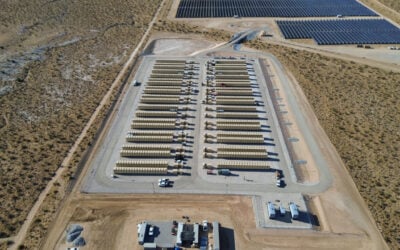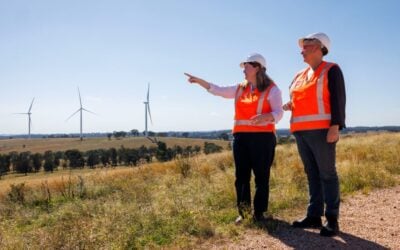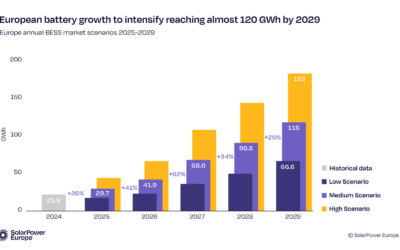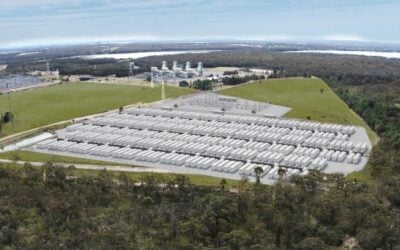Film star DiCaprio is vocal on environment issues. Image: wikimedia user: Thore Siebrands.
14 December 2015: Leonardo DiCaprio has become the latest celebrity figure to endorse the potential of microgrids integrating renewable energy and storage, joining the advisory board of Powerhive, which delivers electrification to remote and rural populations.
Powerhive, which works in emerging markets deploying solar-driven microgrids, has formed its first strategic advisory board and yesterday announced that Hollywood actor DiCaprio, who is vocal on environmental issues, and UK politician Greg Barker have both joined it. DiCaprio’s involvement follows recent news that Arnold Schwarzenegger is an investor in Advanced Microgrid Solutions.
Enjoy 12 months of exclusive analysis
- Regular insight and analysis of the industry’s biggest developments
- In-depth interviews with the industry’s leading figures
- Annual digital subscription to the PV Tech Power journal
- Discounts on Solar Media’s portfolio of events, in-person and virtual
Or continue reading this article for free
Greg Barker was previously Britain’s energy minister and appears to have been well regarded by the solar industry during his time in office. He oversaw the rise of renewable electricity as a proportion of the UK’s energy mix from 6% to 18%, as his website points out.
Powerhive became the first private utility to operate in Kenya earlier this year, receiving a licence to sell electricity to the public in a project which the company claims will serve around 90,000 people in a country where only 23% of the population has access to electricity. The company recently sold its stake in that project to Enel Green Power.
“We have the ability to transition our world to 100% clean, renewable energy, using existing techniques, within our lifetime,” DiCaprio said.
“I am proud to support technologies like those developed by Powerhive that are at the forefront of the trend to move away from fossil fuels. This is an important and real step in our fight against climate change. Powerhive’s efforts will allow hundreds-of-millions of people to benefit from energy access – improving their quality of life without increasing greenhouse gas emissions”.
15 December 2015: As well as identifying regulatory and other barriers to market for energy storage, Ireland’s government has suggested it could assess the need to build storage projects as “strategic energy infrastructure”.
A strategy document produced by the Department of Communications, Energy and Natural Resources (DCENR) appears to have put energy storage as a critical component of transition to a low carbon energy network, along with energy efficiency and renewable energy.
The ‘Ireland’s Transition to a Low Carbon Energy Future’ whitepaper was published by minister of energy Alex White this morning and outlines what actions the Irish government will take over the next 15 years, setting out over 90 planned government actions.
The raft of clean energy policies and support mechanisms is designed to reduce carbon emissions from the country’s energy sector by up to 95% by 2050, with solar to play a central role along with energy efficiency.
The country has an existing target of deriving 16% of its energy demand from renewable sources by 2020 but generated just 8.6% last year. The DCENR has confirmed it will introduce new support frameworks for both utility-scale and microgenerators of renewable sources, including solar, early next year.
The paper also found that integrating higher levels of renewables would require either greater interconnection with nearby countries such as France, between the north and the south of Ireland, or a combination of both approaches – or through the use of energy storage. A decision on interconnection could only be arrived at through evaluation and further cost-benefit analysis, the paper said.
RedT's flow batteries start shipping out to Germany. Image: RedT.
15 December 2015: UK flow battery manufacturer RedT will supply 5kWh to 40kWh energy storage systems to a commercial customer in Germany and to a UK facility owned by “one of Europe’s largest utility companies”.
Neither customer was named in a statement by RedT announcing the news, but the company said that the first was a “major German commercial building services and products firm with an international footprint”.
Both systems will be used for the integration of on-site PV. The installation in Germany will be made available as a demonstration model for other potential customers, while the second will be deployed on the premises of a warehouse and logistics company in England’s south west.
That installation will demonstrate how the value of onsite PV can be greatly enhanced by battery storage – either by increasing the rate of PV self-consumption, or through storing power to export when prices are high.
The latter project will also demonstrate how flow batteries could be used in the ancillary services market, providing balancing applications to grids, as well as acting as a charger and integrator for multiple electric vehicles (EVs) onsite.
RedT, which connected its first project to the UK grid at the beginning of December, said the system going to Germany had already shipped out of its production facilities in Scotland.






